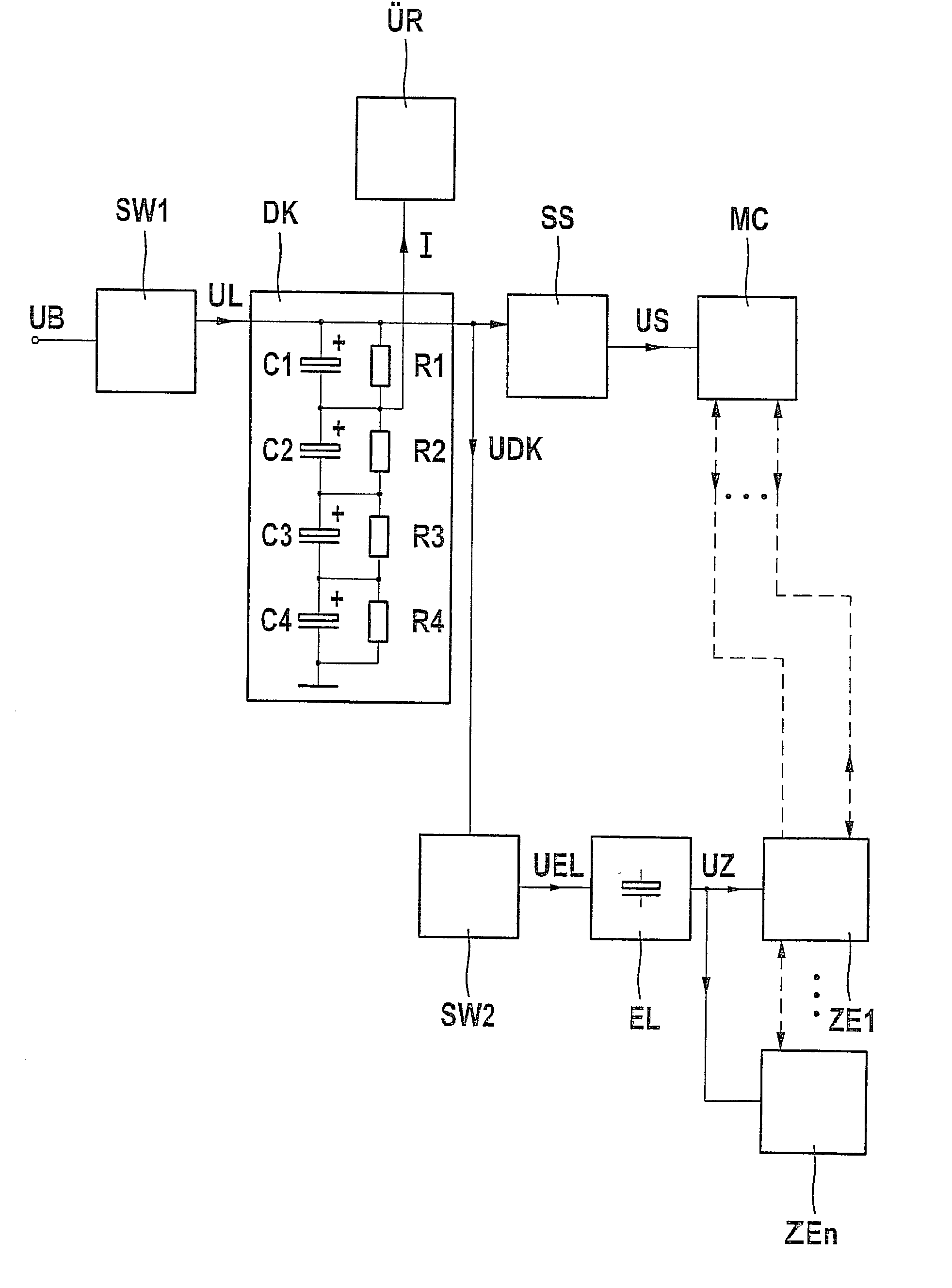Circuit arrangement for the power supply of protective devices for the passengers of a vehicle
- Summary
- Abstract
- Description
- Claims
- Application Information
AI Technical Summary
Benefits of technology
Problems solved by technology
Method used
Image
Examples
Embodiment Construction
[0011] A block diagram of a circuit arrangement is illustrated in the drawing which supplies energy to multiple trigger power modules ZE1, . . . , ZEn of n restraint devices in a vehicle and a signal processor SP, which drives these trigger power modules.
[0012] The circuit arrangement for the power supply shown has a first energy store DK in the form of four double-layer capacitors C1, C2, C3, and C4 connected in series. Required charging voltage UL (e.g., 8.8 + / -0.4 V) for the series circuit of double-layer capacitors C1, . . . , C4 is made available by a voltage transformer SW1 (step up / step down voltage transformer) from battery voltage UB supplied by the vehicle battery.
[0013] The design and the properties of double-layer capacitors are described in U.S. Pat. No. 5,621,607. The electrodes of these double-layer capacitors are made of a composition of aluminum and carbon and therefore produce a relatively low internal ohmic resistance of the capacitor. A diluted sulfuric acid, for...
PUM
 Login to View More
Login to View More Abstract
Description
Claims
Application Information
 Login to View More
Login to View More - Generate Ideas
- Intellectual Property
- Life Sciences
- Materials
- Tech Scout
- Unparalleled Data Quality
- Higher Quality Content
- 60% Fewer Hallucinations
Browse by: Latest US Patents, China's latest patents, Technical Efficacy Thesaurus, Application Domain, Technology Topic, Popular Technical Reports.
© 2025 PatSnap. All rights reserved.Legal|Privacy policy|Modern Slavery Act Transparency Statement|Sitemap|About US| Contact US: help@patsnap.com


